Up until recently, wheel loaders in the 20t category were a rarity on Irish silage pits and for the most part still are. However, as everything else in most modern silage fleets increases in capacity and output such as mowers, trailers and forage harvesters, so too do loaders to avoid bottlenecking at the pit.
Many contractors are now considering larger wheel loaders as result. Most manufacturers in the segment already offer these larger machines but in quarry specification.
However, the majority of these machines need tweaking for the agricultural market.
Volvo is currently one of the leaders in this segment offering its larger-chassis L110H and L120H models in its agricultural specification.
Based outside the town of Poyntzpass in the Orchard county that is Armagh, Ivan Megaw and his son Willy are third- and fourth-generation agricultural contractors.
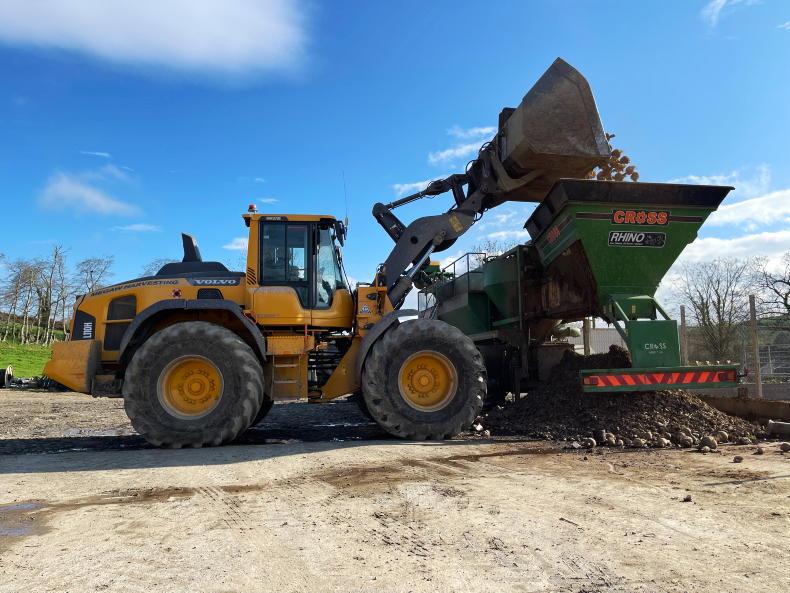
Aside from work on the silage pit during the summer months, the Megaws' Volvo L110H spent the winter months loading over 8,000t of beet into the beet washer.
Last year, the decision was made to upgrade the fleet’s JCB 435S loader for a new ag spec Volvo L110H, the first of its kind to be sold in Northern Ireland.
Aside from tillage and slurry operations, the Megaws last year cut in excess of 10,000 acres consisting mainly of grass and wholecrop.

The L110H has an unladen weight of 18,670kg and maximum tipping load of 11,640kg.
Over 8,000t of beet was harvested too this season, all of which needed to be loaded into the washer. These two jobs saw Megaw’s Volvo L110H clock up almost 1,100 hours in 12 months of ownership.
Previous loaders
The Megaws had a history of running Manitou and Redrock TH 500 pivot-steer teleloaders in the early 2000s before moving to a Volvo L60E wheel loader in 2009 after the unfortunate mishap of their Redrock having gone on fire.
“We got one of the first TH 500 Redrock loaders when they were initially launched. They were a good machine for their day. The first one was fitted with a Cummins engine and the later one, which we had from 2005 until 2010, was fitted with a more powerful Iveco engine,” Willy said.
“Our first Volvo was a 2005 L60E with 7,000 hours which we bought in 2010 kept for five years. It was a fantastic shovel and gave little to no bother. By 2014, it had 12,000 hours clocked up so it was soon replaced with a 2011 L90F with 1,500 hours that Dad spotted in Carlow. It turned out an unlucky machine for us.”
Willy said: “Straight away, I found it hard to warm to, mainly because I was used to the lollipop control levers in the L60E. It was hard to go back to the joystick which the L90F had. The first day out at silage, it didn’t feel near as well balanced as the L60E. It was light on the front or “giddy” as one man I spoke to said. It was much more stable and better balanced with a fork of grass.
“During the second season the rear differential went, which cost over £7,000 to put right. It went trouble-free then in the third season but let’s just say 2018, its fourth season, was the opposite. First of all, it smashed two hubs during first cut and before major transmission trouble during second cut.
“Having found out there was no quick fix mid-season, we contacted Ervine plant about sourcing us a JCB 435S which they did and so we eventually traded the L90H once repaired as part of the deal. The 435S was a 2015 machine with 3,000 hours. We kept it then for the 2019 and 2020 seasons. The 435S was a well-balanced loader and quick on its feet. The only downside was the turning circle which seemed better on the Volvos,” Willy explained.
Having spent just £7,000 on replacing its brakes, EGR valve and hydraulic rams, both Willy and his father Ivan decided it was time to buy new in order to avail of warranty, so that running costs could become somewhat more predictable.
Buying new
After making the decision to buy a new loader for the 2021 silage season the lads priced both Volvo and JCB.
Initially, it was between a new 435S and an L60H Volvo and not an L90H given their past experiences even though it was the closest competitor for the 435S. Ivan felt that opting for an L60H was a step backwards in terms of capacity having come from a 435S. So, out of curiosity more than anything, they priced a Volvo L110H.
The lads were expecting a larger price gap between the three. After speaking with L110H owners in the south of the country, Willy was impressed with what he heard.
He recalls one contractor’s response having asked what its ability to climb was like. He said: “His answer was ‘the steeper the pit gets, the better it goes’”. Shortly after, having secured a five-year warranty, a deal was done on a L110H.
Engine
Underneath the large electrically opening bonnet is Volvo’s own 7.8l Penta D8J. This six-cylinder power plant churns out 260hp and 1,250Nm of torque.

Access to the engine and cooling pack is excellent.
Willy said: “Looking back after 1,000 hours we couldn’t fault the 110 for being hard on fuel which to an extent is down to the fact it’s working at ease. At silage, it’s burning between 14 and 18l/hr which is not far off what the JCB 435S would burn producing 30hp less and almost 5t lighter. The 270l fuel tank will generally see us through a typical day during silage.”
As part of the agricultural package, the loader came fitted with a reversible fan. He noted that even on the hottest of days last summer the temperature gauge never as much moved a degree.
The rear pivoting bonnet opens backwards leaving complete access to the engine for maintenance purposes.
Transmission and hydraulics
The loader is equipped with Volvo’s own four-speed automatic power shift (APS) transmission which can also be operated manually. There is a ‘kickdown’ button on the armrest beside the forward and reverse shuttle switch to quickly drop a gear as needed.
Also included is the OptiShift feature providing torque lockup and reverse by braking function for smoother directional changes.
Willy praised the torque lockup function on steep pits which transfers all engine power to driving the machine forward while keeping engine rpm to a minimum.
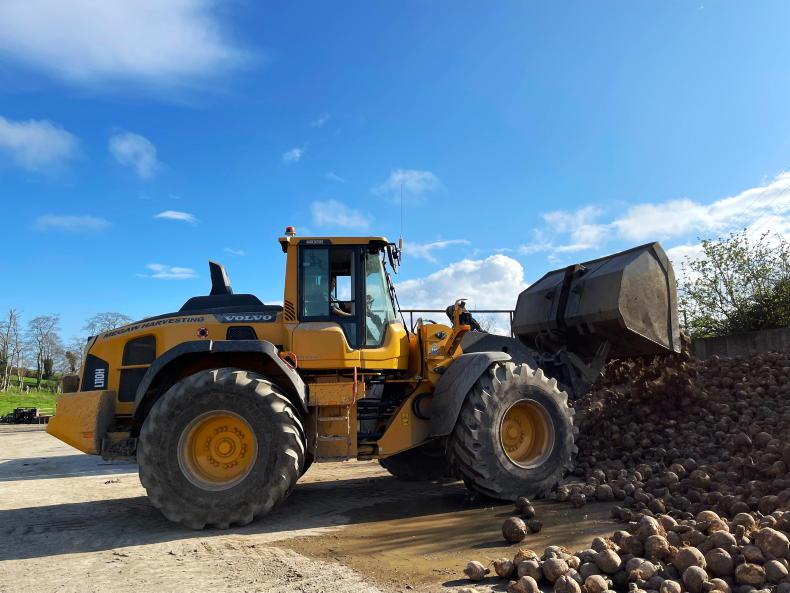
The L110H is fitted with a 7.8l Volvo Penta engine producing 260hp.
The four speed ranges are as follows: 0-7km/h, 13.5km/h, 28km/h and 40km/h.
The front axle is 100% locking while the rear has a limited slip differential. This leaves the ability to manually engage the front differential via foot pedal as needed. He explained how this setup leaves the rear axle following the front axle better.
“For instance, while pushing a load of grass while turning, the front axle follows with no spinout. The JCB’s rear axle, in this situation, would have wanted to go straight and cause the front left wheel to spin out while turning right or vice versa.”
The L110H features two load-sensing variable displacement axial piston pumps. Pump one provides a flow rate of 128l/min entirely to the working hydraulic system while pump two also provides 128l/min supplying the brakes, steering as well as the working hydraulic system.
The loader has a maximum tipping load of 10,560kg and maximum lift height of 4,550mm thanks to high tip boom (13,100kg and 4,030mm standard boom).
The Megaws opted for the small single lever control joystick over the lollipop levers, but different to most ag loader joysticks, this is much smaller with only a third service function on it. Forward and reverse is positioned on the console to the base of the joystick.
Willy pointed out how the benefit of this joystick is that it’s much easier on the wrist given that movements are more precise and not nearly as extreme as with standard joysticks, especially noticeable he says while flicking off a fork of grass.
Cab and build quality
One thing Willy emphasised from the start was the loader’s strength and build quality.
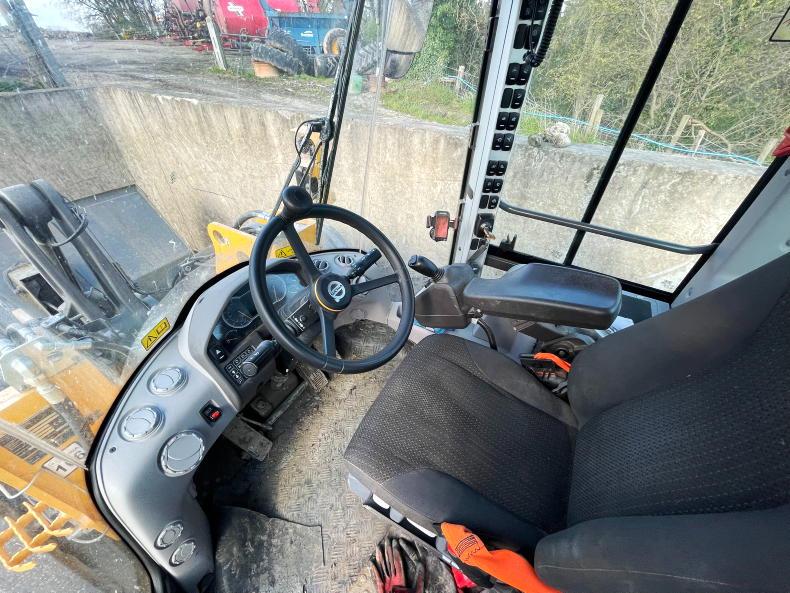
Although the cab could be a small bit more spacious, visibility is good.
“Looking around the loader, there’s very little you could fault it on. It’s a smart-looking well-finished machine.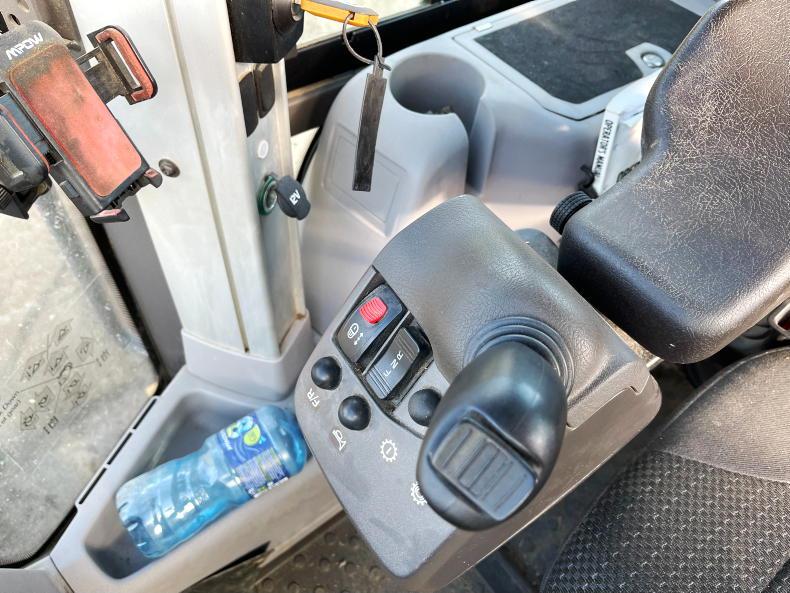
Willy complimented the small single-control joystick which not only fits well in handle but is very precise and responsive.
“Even little things like the pipework running to the pins on the boom for the auto greaser are steel. The paint work too seems excellent.
“The cab is well finished off. However, if there was to be a slight negative it could be that it could be a little wider and longer. From a controls aspect, everything’s near hand and within reach. Its height and z-bar linkage combined with the full LED light package provides great visibility day or night. We had considered the option of joystick steering but the additional significant cost was hard to justify,” said Willy.
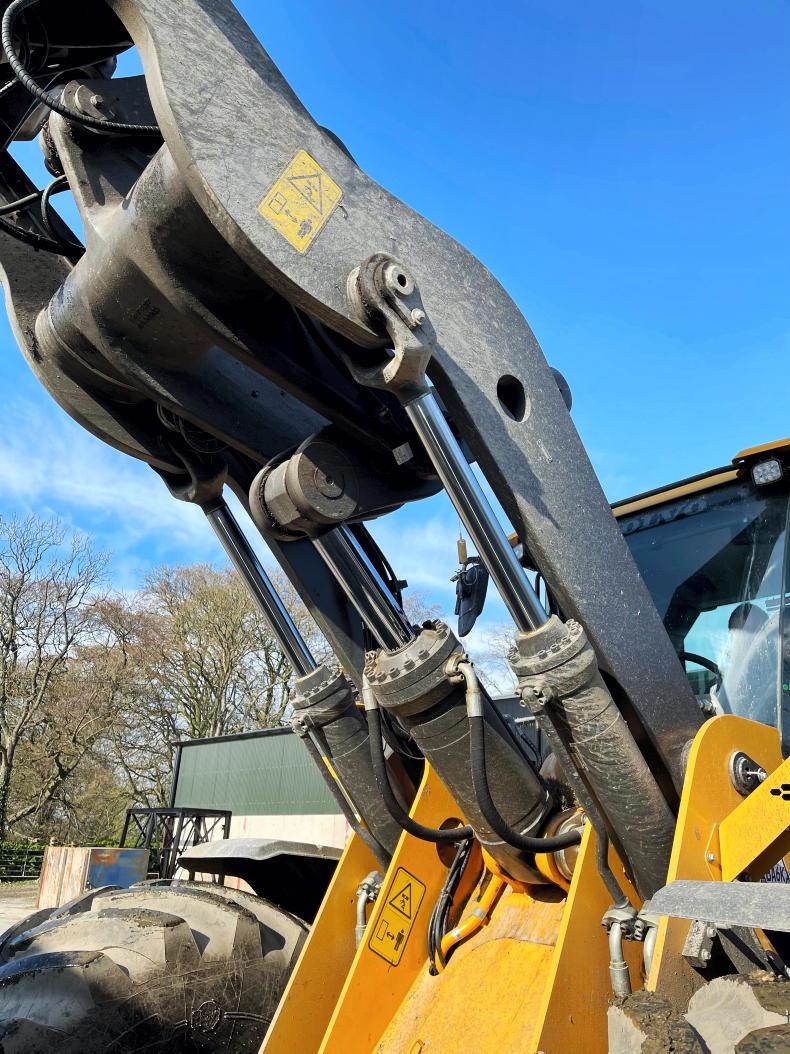
The large single ram and z-bar linkage leaves the loader with a great flicking ability on the pit.
Other features standard on the ag specification machines include boom suspension, reversible fan, third service, ag tyres and ag suitable mudguards.
Willy said: “With no initial plans to buy a loader of this capacity, its extra ability opened our eyes in how it can keep grass moved and rolled quicker. With the increase in power we opted to replace our old 14ft MDE fork for a 16ft model with 6ft 6in tines. One swipe with the 16ft and a full 16t trailer load of grass is gone. The reason for the longer tines was that even in narrower pits, a good fork of grass can still be carried when folded to 8ft.”
“With over 1,000 hours clocked up already, it has gone well so far.
“Fuel consumption and performance on the pit is excellent. In terms of stature, it’s probably 2ft longer than the 435S and 8-10in higher but just as manoeuvrable. Moving to a new machine with a warranty plan was something we should have considered sooner given the hours clocked up annually.
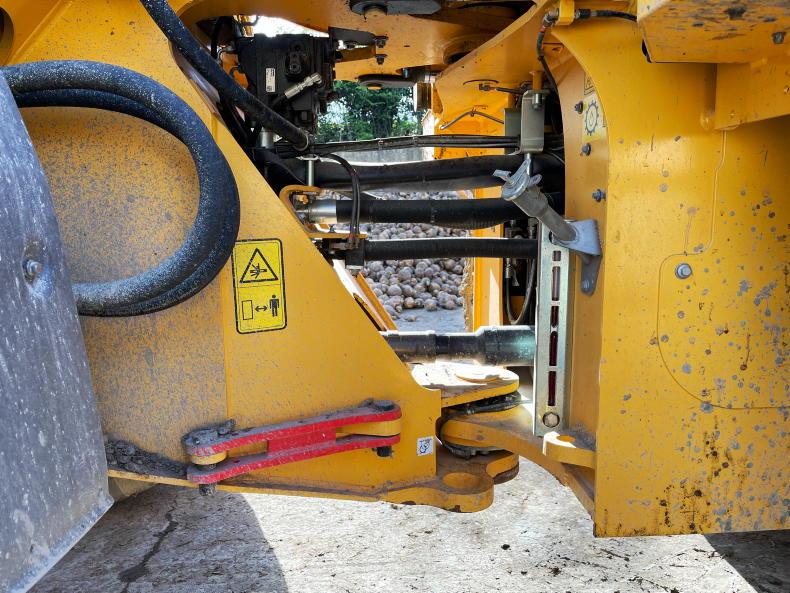
Both top and bottom articulation points are greased via the auto greaser.
All in all, I don’t believe there’s a competitor yet that can touch it when it comes to performance on the pit.”
Engine: 260hp, 7.8l six-cylinder Volvo Penta D8J.Transmission: four-speed automatic powershift with OptiShift. Hydraulics: dual load-sensing axial piston pumps (128l/min x2). Unladen weight: 18,670kg.Lift capacity: 13,100kg standard (10,560kg long boom).Tyres: Michelin Cerexbib 750/65 R26.Fuel and AdBlue tank capacity: 270l and 25l. 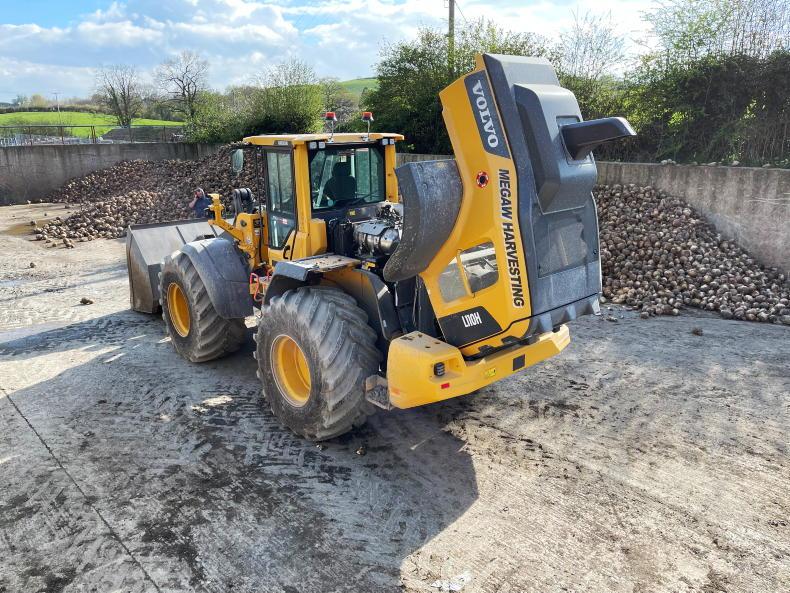
The large bonnet opens backwards electrically at the press of a switch.
Up until recently, wheel loaders in the 20t category were a rarity on Irish silage pits and for the most part still are. However, as everything else in most modern silage fleets increases in capacity and output such as mowers, trailers and forage harvesters, so too do loaders to avoid bottlenecking at the pit.
Many contractors are now considering larger wheel loaders as result. Most manufacturers in the segment already offer these larger machines but in quarry specification.
However, the majority of these machines need tweaking for the agricultural market.
Volvo is currently one of the leaders in this segment offering its larger-chassis L110H and L120H models in its agricultural specification.
Based outside the town of Poyntzpass in the Orchard county that is Armagh, Ivan Megaw and his son Willy are third- and fourth-generation agricultural contractors.

Aside from work on the silage pit during the summer months, the Megaws' Volvo L110H spent the winter months loading over 8,000t of beet into the beet washer.
Last year, the decision was made to upgrade the fleet’s JCB 435S loader for a new ag spec Volvo L110H, the first of its kind to be sold in Northern Ireland.
Aside from tillage and slurry operations, the Megaws last year cut in excess of 10,000 acres consisting mainly of grass and wholecrop.

The L110H has an unladen weight of 18,670kg and maximum tipping load of 11,640kg.
Over 8,000t of beet was harvested too this season, all of which needed to be loaded into the washer. These two jobs saw Megaw’s Volvo L110H clock up almost 1,100 hours in 12 months of ownership.
Previous loaders
The Megaws had a history of running Manitou and Redrock TH 500 pivot-steer teleloaders in the early 2000s before moving to a Volvo L60E wheel loader in 2009 after the unfortunate mishap of their Redrock having gone on fire.
“We got one of the first TH 500 Redrock loaders when they were initially launched. They were a good machine for their day. The first one was fitted with a Cummins engine and the later one, which we had from 2005 until 2010, was fitted with a more powerful Iveco engine,” Willy said.
“Our first Volvo was a 2005 L60E with 7,000 hours which we bought in 2010 kept for five years. It was a fantastic shovel and gave little to no bother. By 2014, it had 12,000 hours clocked up so it was soon replaced with a 2011 L90F with 1,500 hours that Dad spotted in Carlow. It turned out an unlucky machine for us.”
Willy said: “Straight away, I found it hard to warm to, mainly because I was used to the lollipop control levers in the L60E. It was hard to go back to the joystick which the L90F had. The first day out at silage, it didn’t feel near as well balanced as the L60E. It was light on the front or “giddy” as one man I spoke to said. It was much more stable and better balanced with a fork of grass.
“During the second season the rear differential went, which cost over £7,000 to put right. It went trouble-free then in the third season but let’s just say 2018, its fourth season, was the opposite. First of all, it smashed two hubs during first cut and before major transmission trouble during second cut.
“Having found out there was no quick fix mid-season, we contacted Ervine plant about sourcing us a JCB 435S which they did and so we eventually traded the L90H once repaired as part of the deal. The 435S was a 2015 machine with 3,000 hours. We kept it then for the 2019 and 2020 seasons. The 435S was a well-balanced loader and quick on its feet. The only downside was the turning circle which seemed better on the Volvos,” Willy explained.
Having spent just £7,000 on replacing its brakes, EGR valve and hydraulic rams, both Willy and his father Ivan decided it was time to buy new in order to avail of warranty, so that running costs could become somewhat more predictable.
Buying new
After making the decision to buy a new loader for the 2021 silage season the lads priced both Volvo and JCB.
Initially, it was between a new 435S and an L60H Volvo and not an L90H given their past experiences even though it was the closest competitor for the 435S. Ivan felt that opting for an L60H was a step backwards in terms of capacity having come from a 435S. So, out of curiosity more than anything, they priced a Volvo L110H.
The lads were expecting a larger price gap between the three. After speaking with L110H owners in the south of the country, Willy was impressed with what he heard.
He recalls one contractor’s response having asked what its ability to climb was like. He said: “His answer was ‘the steeper the pit gets, the better it goes’”. Shortly after, having secured a five-year warranty, a deal was done on a L110H.
Engine
Underneath the large electrically opening bonnet is Volvo’s own 7.8l Penta D8J. This six-cylinder power plant churns out 260hp and 1,250Nm of torque.

Access to the engine and cooling pack is excellent.
Willy said: “Looking back after 1,000 hours we couldn’t fault the 110 for being hard on fuel which to an extent is down to the fact it’s working at ease. At silage, it’s burning between 14 and 18l/hr which is not far off what the JCB 435S would burn producing 30hp less and almost 5t lighter. The 270l fuel tank will generally see us through a typical day during silage.”
As part of the agricultural package, the loader came fitted with a reversible fan. He noted that even on the hottest of days last summer the temperature gauge never as much moved a degree.
The rear pivoting bonnet opens backwards leaving complete access to the engine for maintenance purposes.
Transmission and hydraulics
The loader is equipped with Volvo’s own four-speed automatic power shift (APS) transmission which can also be operated manually. There is a ‘kickdown’ button on the armrest beside the forward and reverse shuttle switch to quickly drop a gear as needed.
Also included is the OptiShift feature providing torque lockup and reverse by braking function for smoother directional changes.
Willy praised the torque lockup function on steep pits which transfers all engine power to driving the machine forward while keeping engine rpm to a minimum.

The L110H is fitted with a 7.8l Volvo Penta engine producing 260hp.
The four speed ranges are as follows: 0-7km/h, 13.5km/h, 28km/h and 40km/h.
The front axle is 100% locking while the rear has a limited slip differential. This leaves the ability to manually engage the front differential via foot pedal as needed. He explained how this setup leaves the rear axle following the front axle better.
“For instance, while pushing a load of grass while turning, the front axle follows with no spinout. The JCB’s rear axle, in this situation, would have wanted to go straight and cause the front left wheel to spin out while turning right or vice versa.”
The L110H features two load-sensing variable displacement axial piston pumps. Pump one provides a flow rate of 128l/min entirely to the working hydraulic system while pump two also provides 128l/min supplying the brakes, steering as well as the working hydraulic system.
The loader has a maximum tipping load of 10,560kg and maximum lift height of 4,550mm thanks to high tip boom (13,100kg and 4,030mm standard boom).
The Megaws opted for the small single lever control joystick over the lollipop levers, but different to most ag loader joysticks, this is much smaller with only a third service function on it. Forward and reverse is positioned on the console to the base of the joystick.
Willy pointed out how the benefit of this joystick is that it’s much easier on the wrist given that movements are more precise and not nearly as extreme as with standard joysticks, especially noticeable he says while flicking off a fork of grass.
Cab and build quality
One thing Willy emphasised from the start was the loader’s strength and build quality.

Although the cab could be a small bit more spacious, visibility is good.
“Looking around the loader, there’s very little you could fault it on. It’s a smart-looking well-finished machine.
Willy complimented the small single-control joystick which not only fits well in handle but is very precise and responsive.
“Even little things like the pipework running to the pins on the boom for the auto greaser are steel. The paint work too seems excellent.
“The cab is well finished off. However, if there was to be a slight negative it could be that it could be a little wider and longer. From a controls aspect, everything’s near hand and within reach. Its height and z-bar linkage combined with the full LED light package provides great visibility day or night. We had considered the option of joystick steering but the additional significant cost was hard to justify,” said Willy.

The large single ram and z-bar linkage leaves the loader with a great flicking ability on the pit.
Other features standard on the ag specification machines include boom suspension, reversible fan, third service, ag tyres and ag suitable mudguards.
Willy said: “With no initial plans to buy a loader of this capacity, its extra ability opened our eyes in how it can keep grass moved and rolled quicker. With the increase in power we opted to replace our old 14ft MDE fork for a 16ft model with 6ft 6in tines. One swipe with the 16ft and a full 16t trailer load of grass is gone. The reason for the longer tines was that even in narrower pits, a good fork of grass can still be carried when folded to 8ft.”
“With over 1,000 hours clocked up already, it has gone well so far.
“Fuel consumption and performance on the pit is excellent. In terms of stature, it’s probably 2ft longer than the 435S and 8-10in higher but just as manoeuvrable. Moving to a new machine with a warranty plan was something we should have considered sooner given the hours clocked up annually.

Both top and bottom articulation points are greased via the auto greaser.
All in all, I don’t believe there’s a competitor yet that can touch it when it comes to performance on the pit.”
Engine: 260hp, 7.8l six-cylinder Volvo Penta D8J.Transmission: four-speed automatic powershift with OptiShift. Hydraulics: dual load-sensing axial piston pumps (128l/min x2). Unladen weight: 18,670kg.Lift capacity: 13,100kg standard (10,560kg long boom).Tyres: Michelin Cerexbib 750/65 R26.Fuel and AdBlue tank capacity: 270l and 25l. 
The large bonnet opens backwards electrically at the press of a switch.















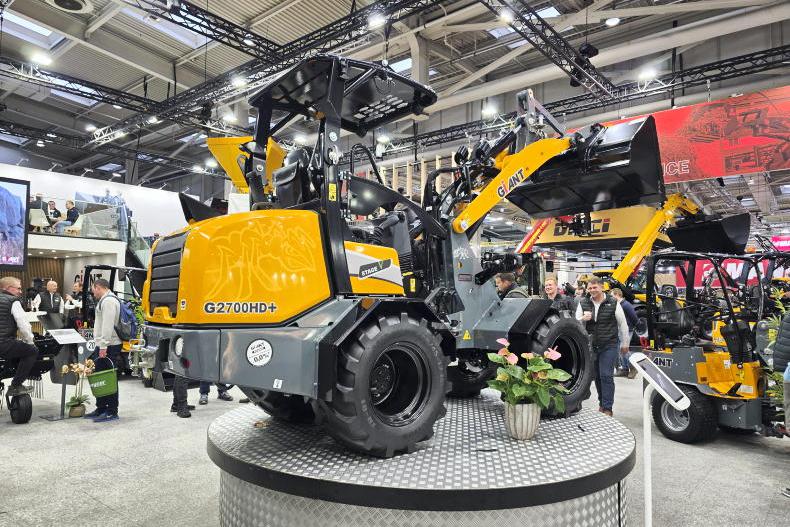


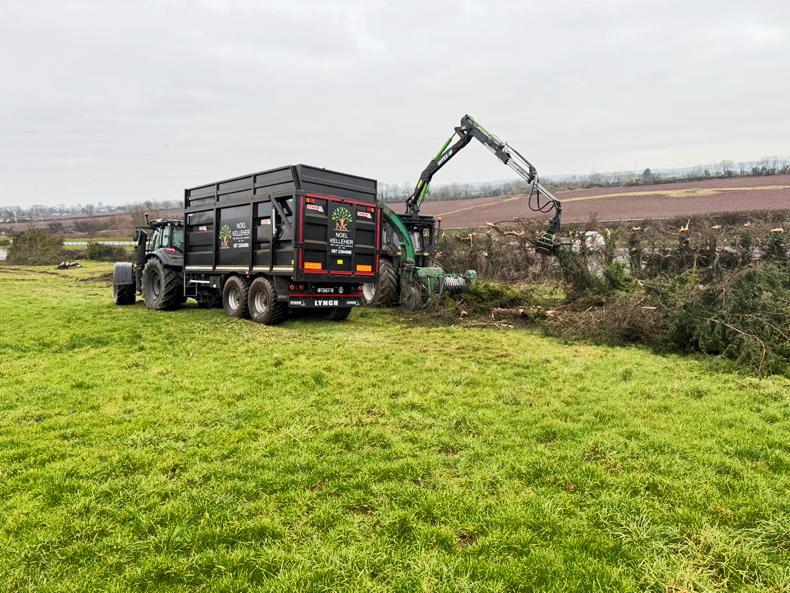
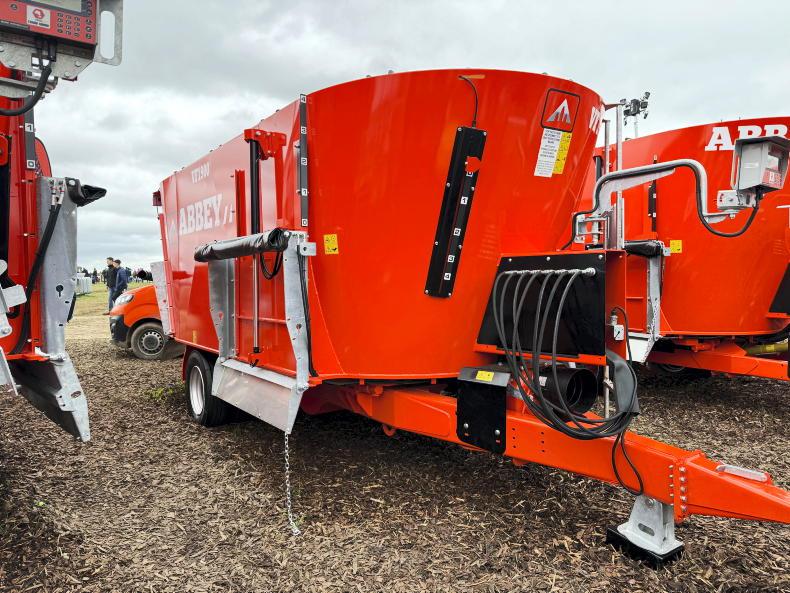
SHARING OPTIONS